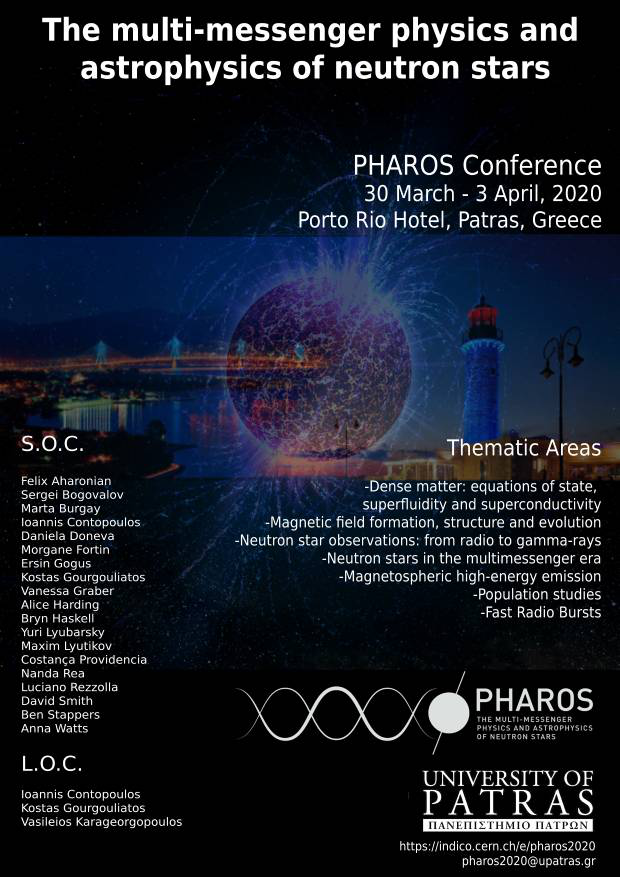Speaker
Description
The magnetic field is believed to play an important role in at least some core-collapse supernovae when its magnitude reaches $10^{15}$ G, which is typical of the most magnetic neutron stars called magnetars. In the presence of fast rotation, such a strong magnetic field can drive powerful jet-like explosions if it has the large-scale coherence of a dipole. The topology of the magnetic field is, however, probably much more complex with strong multipolar and small-scale components and the consequences for the explosion are so far unclear.
We investigate the effects of the magnetic field topology on the dynamics of core-collapse supernovae and the properties of the forming proto-neutron star (PNS) by comparing different multipolar orders and radial extents. Using axisymmetric relativistic MHD simulations, we find that higher multipolar magnetic configurations lead to generally less energetic explosions, slower expanding shocks and less collimated outflows. Models with lower-order multipolar configuration tend to produce more oblate PNS, which in some cases are surrounded by a rotationally supported toroidal structure of neutron-rich material. Moreover, magnetic fields which are distributed on smaller angular scales produce more massive and faster rotating central PNS, suggesting that higher-order multipolar configurations tend to decrease the efficiency of the magnetorotational launching mechanism. Even if our dipolar models systematically display a far more efficient extraction of the rotational energy of the PNS, fields distributed on smaller angular scales are still capable of powering magnetorotational explosions and shape the evolution of the central compact object.

